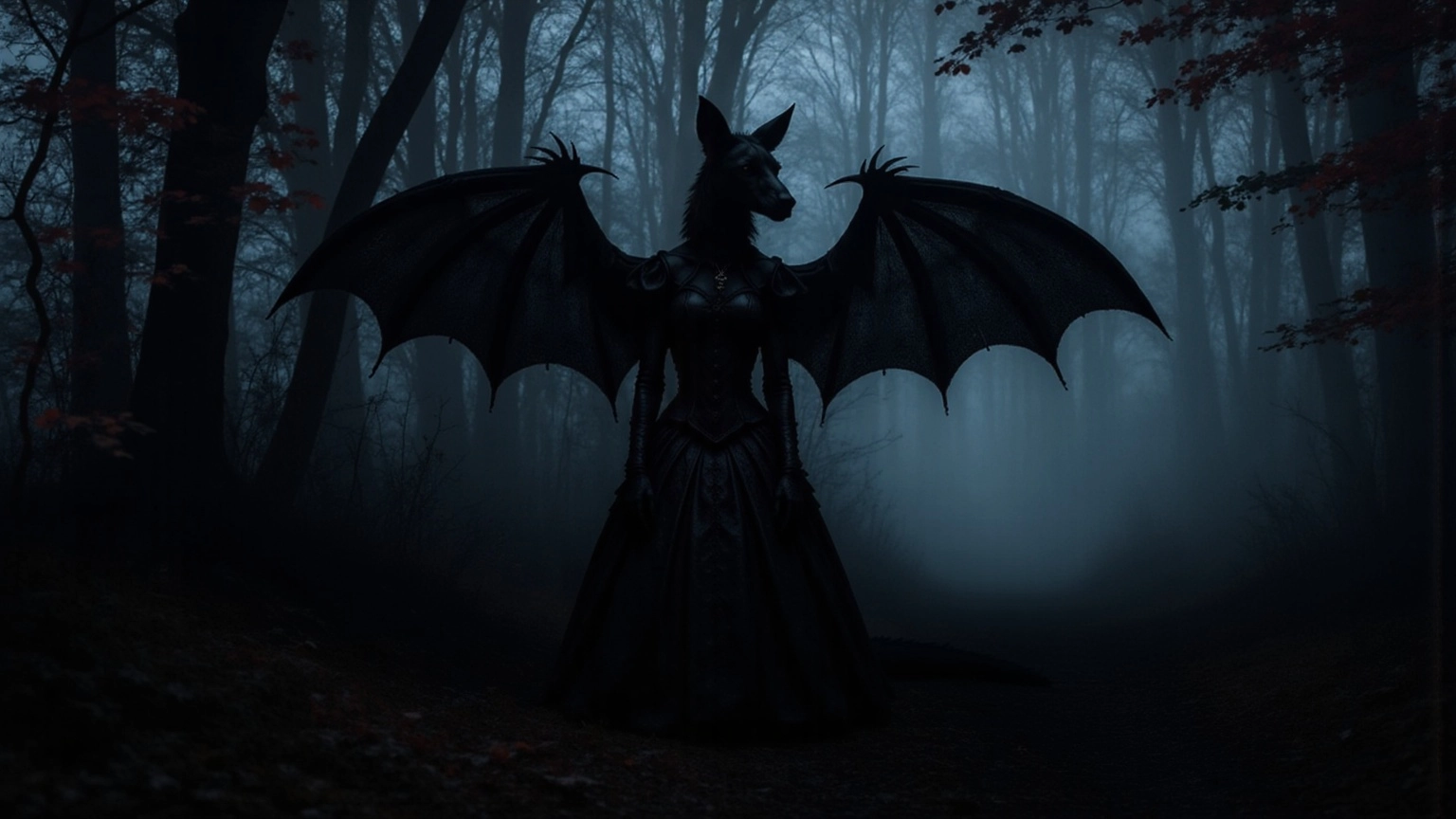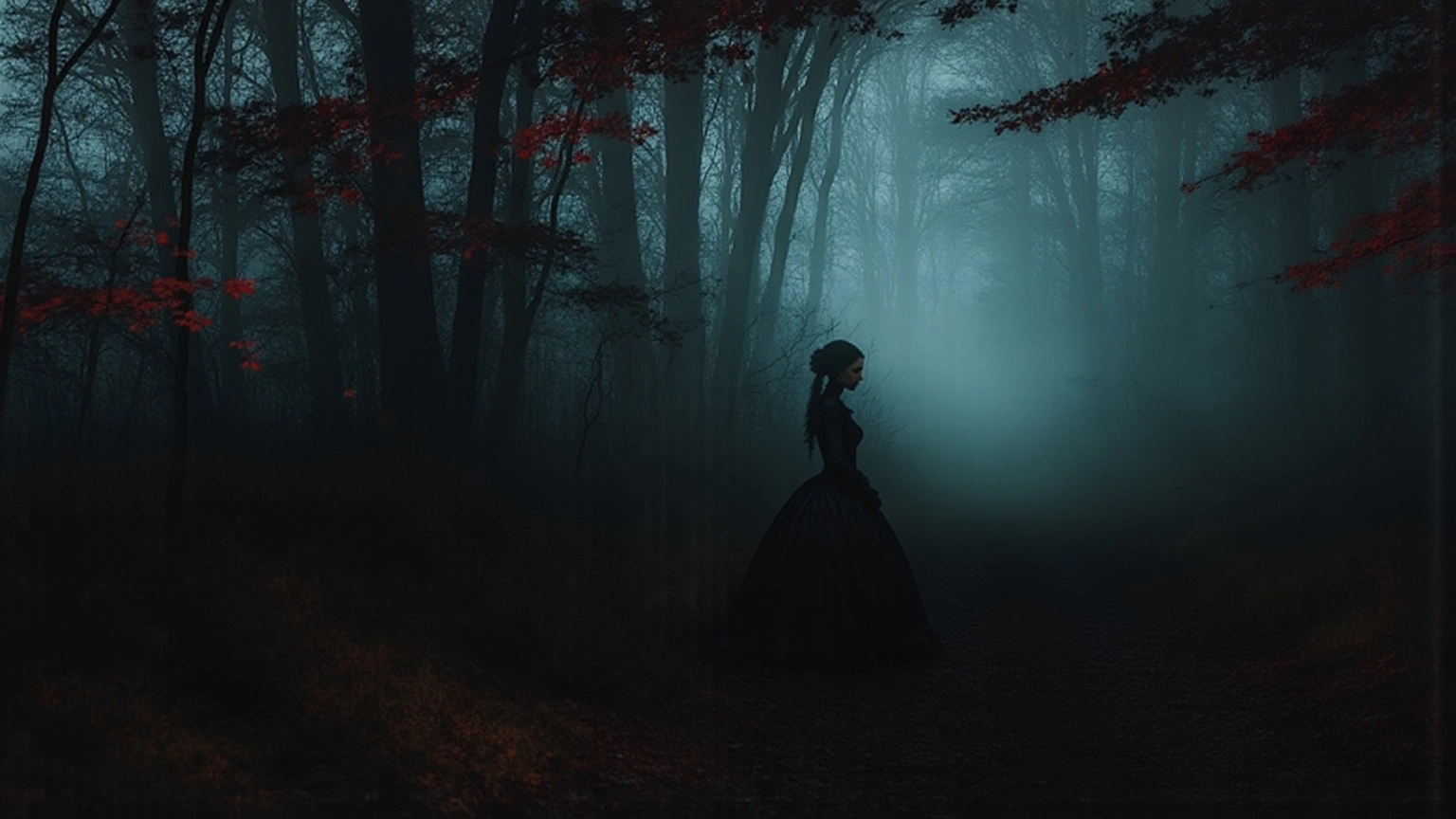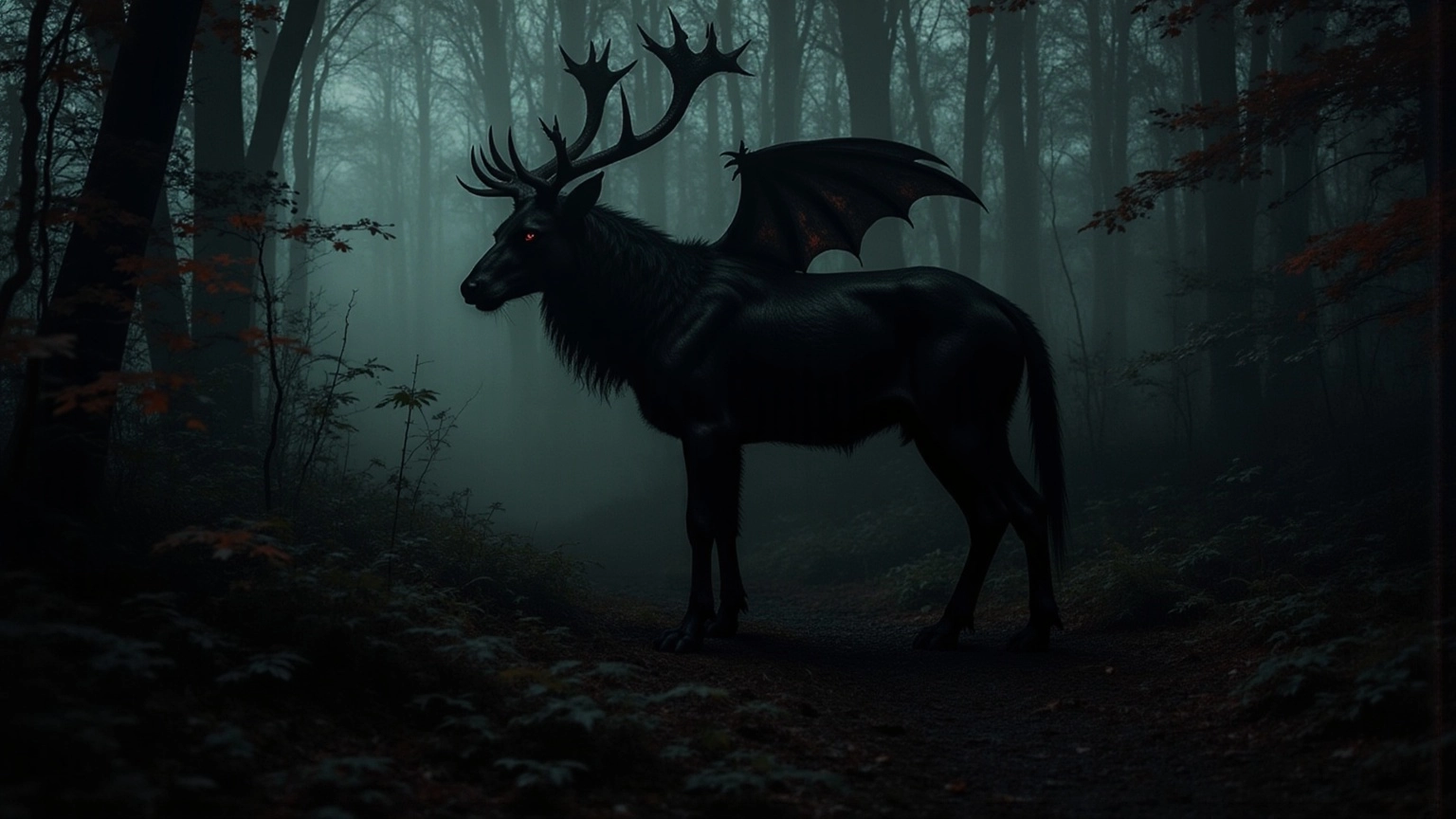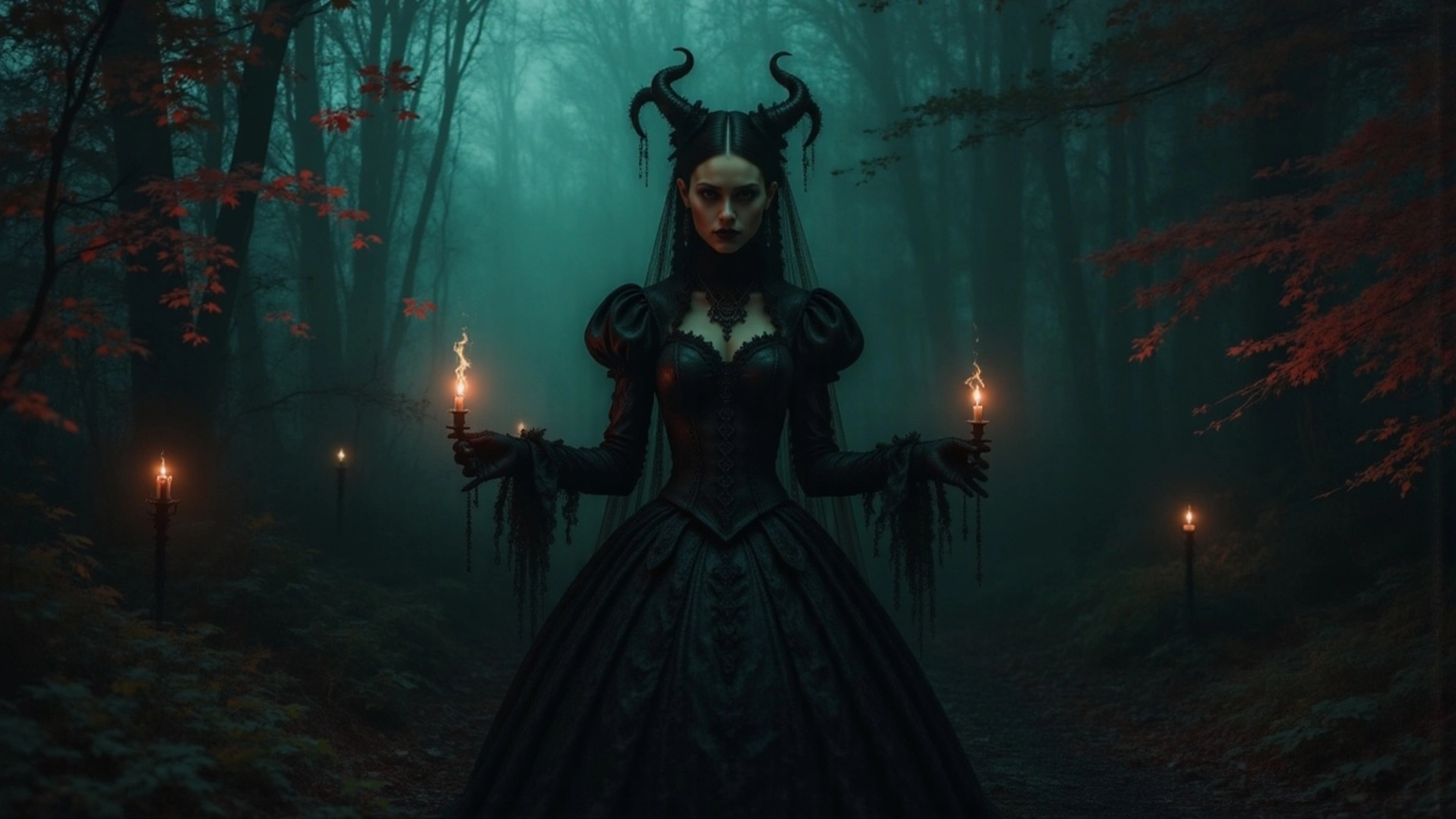
Understanding the New Jersey Devil Myth: Origins and Significance
Share
Overview
The New Jersey Devil myth—born from the chilling tale of Mother Leeds in 1735—encapsulates the fears and superstitions that haunted early settlers. It's more than just a story; it’s a living emblem of New Jersey’s cultural identity. This legend doesn’t just linger in the shadows; it pulses through local folklore, igniting community engagement and sparking modern interpretations. Festivals and merchandise breathe new life into its narrative, showcasing its undeniable significance as a piece of New Jersey's history that refuses to fade away.
Introduction
The New Jersey Devil myth—an intoxicating fusion of folklore and history—has haunted the Pine Barrens for centuries, stirring both dread and allure. Born from the tale of Mother Leeds and her cursed thirteenth child, this legendary creature mirrors the intricate tapestry of human experience and cultural identity in New Jersey. But as this myth evolves, it begs the question: how does a story steeped in superstition and societal fears morph into a symbol of community pride and resilience? Dive in, and let’s unravel the shadows together.
Defining the New Jersey Devil: Myth and Folklore
The New Jersey Devil myth, often whispered about as the Leeds Demon, describes a mythical specter that prowls the Pine Barrens of South New Jersey, cloaked in shadows. Picture it: a kangaroo-like figure, bat-like wings unfurled, a horse's head looming, and a long forked tail trailing behind. Its roots dig deep into the tale of Mother Leeds, who, in 1735, cursed her thirteenth child during a stormy childbirth, which contributed to the emergence of the New Jersey Devil myth. This isn't just folklore; it's a mirror reflecting our need to explain the unexplainable.
This creature has morphed into a symbol—a gritty emblem of the New Jersey Devil myth that collides with reality for the locals. Its story, passed down like a secret, twists and turns with every retelling, anchoring itself in the identity of the state. From wild festivals to quirky merchandise, from local art to haunting literature, the legend weaves itself into the very fabric of New Jersey’s culture.
Fast forward to today, and the New Jersey Devil myth still ignites curiosity. Recent sightings spark conversations, stirring the pot of local lore. Remember January 16 through 23, 1909? Panic swept through towns as numerous encounters were reported, leading to school closures and a mass exodus from work. It’s a reminder that the supernatural still holds sway, tapping into our collective fears and curiosities. This legend, rooted in the New Jersey Devil myth, isn’t just a ghost story; it’s a thread connecting communities to their shared history and cultural roots.
And let’s not forget the tantalizing $10,000 reward from the Philadelphia Zoo for capturing this elusive creature. It only thickens the plot, drawing in thrill-seekers and myth chasers alike. Community engagement and preservation efforts serve as a bridge between myth and the wild landscapes that inspired it. The New Jersey Devil myth isn’t just a tale; it’s a living piece of local lore, breathing life into the gothic narrative of the Garden State.

Historical Context and Origins of the New Jersey Devil
The creature from New Jersey? Its roots dig deep into the colonial era, specifically the early 18th century, when settlers began to carve out lives in the Pine Barrens. Amidst local politics, religious disputes, and simmering societal tensions, the legend ignited. Picture Mother Leeds, a resident of Estellville, who, upon discovering she was to have her thirteenth child, unleashed her frustration with a curse on the unborn. This tale isn’t just folklore; it embodies the fears and superstitions of early settlers, who attributed the unexplained to supernatural forces lurking in the shadows.
As time twisted and turned, the legend evolved, intertwining with local history, eventually becoming a staple of New Jersey's identity known as the New Jersey Devil myth. The story of this entity reflects not just the fears of its time but illustrates how the New Jersey Devil myth shapes contemporary folklore, influencing the community's tales and views. Folklore is more than just stories; it’s the lifeblood of community identity—much like the socio-cultural significance of forest resources in Ghana, where local customs and beliefs govern resource management. This connection reveals how historical narratives cast long shadows over today’s societal landscapes. Are you ready to delve deeper into this gothic tapestry of myth and reality?

Key Characteristics and Cultural Significance of the New Jersey Devil
The New Jersey Demon—what a sight to behold. Grotesque and elusive, it stirs the imagination. Picture this: a creature with a chaotic blend of animal traits—hooves, wings, a long tail—each feature amplifying its fearsome reputation. It prowls the Pine Barrens, a shadow lurking, terrorizing locals, raiding farms, and leaving whispers in its wake.
However, this legend, known as the New Jersey Devil myth, is more than mere folklore; it’s woven into the very fabric of the state’s identity. Festivals erupt in its honor, merchandise flies off the shelves, and even the NHL's Devils owe their name to this beast. It’s a reminder—a haunting echo of New Jersey’s rich history and the New Jersey Devil myth, illustrating the power of storytelling to shape our narratives.
So, what does the Demon mean to you? Is it just a tale, or does it pulse with deeper significance? Dive into this gothic narrative and explore the shadows that dance around our culture, where every story is a thread in the tapestry of who we are.

Modern Interpretations and Legacy of the New Jersey Devil
In the shadows of modern culture, the New Jersey Devil myth lurks—a significant figure in local folklore that ignites imaginations across books, films, and art. Its image? Commercialized, splashed across merchandise and celebrated in local festivals that breathe life into the myth. The New Jersey Devil myth pulses through New Jerseyans as a badge of pride and a unique thread in their cultural tapestry. As the supernatural and folklore gain traction, the New Jersey Devil myth stands tall, a testament to the raw power of myth in crafting community identity and collective memory. What does it mean to embrace such a haunting tale? Dive deeper and let the whispers of the past guide your exploration of this gothic narrative.

Conclusion
The New Jersey Devil myth isn’t just folklore; it’s a pulse of the Garden State’s very essence. Born from the haunting tale of Mother Leeds and her thirteenth child, this legendary creature transcends mere superstition. It’s a symbol, a fierce embodiment of community and shared narratives echoing through the ages. It reflects the fears of early settlers and the raw power of storytelling that shapes local culture and identity.
This article unearths the evolution of the New Jersey Devil myth, tracing its roots from colonial whispers to modern-day interpretations. With grotesque characteristics, the folklore surrounding this creature has sparked festivals, merchandise, and artistic expressions, weaving it into the very fabric of New Jersey’s culture. The legend thrives, captivating locals and thrill-seekers alike, a thread that stitches together past and present.
Ultimately, the New Jersey Devil myth is more than just a ghost story; it’s a raw reflection of human experience—our fears, our creativity. Embracing such tales deepens our understanding of community identity and beckons us to explore the narratives that define us. The New Jersey Devil stands as a testament to the seductive power of folklore, urging us to dive into our cultural histories and recognize the mythic threads that craft our collective memory.
Frequently Asked Questions
What is the New Jersey Devil?
The New Jersey Devil, also known as the Leeds Demon, is a mythical creature that is said to inhabit the Pine Barrens of South New Jersey. It is described as having a kangaroo-like body, bat-like wings, a horse's head, and a long forked tail.
What is the origin of the New Jersey Devil myth?
The myth originates from the story of Mother Leeds, who, in 1735, cursed her thirteenth child during a stormy childbirth. This tale contributed to the emergence of the New Jersey Devil legend.
How has the New Jersey Devil myth influenced local culture?
The New Jersey Devil has become a symbol of local identity, inspiring wild festivals, quirky merchandise, local art, and haunting literature, which all weave the legend into the fabric of New Jersey’s culture.
What notable event occurred related to the New Jersey Devil in January 1909?
From January 16 to 23, 1909, numerous reported sightings of the New Jersey Devil caused panic in local towns, leading to school closures and a mass exodus from work.
Is there any reward associated with the New Jersey Devil?
Yes, the Philadelphia Zoo has offered a $10,000 reward for capturing the elusive New Jersey Devil, attracting thrill-seekers and myth chasers.
How does the New Jersey Devil myth connect communities?
The myth serves as a thread connecting communities to their shared history and cultural roots, fostering community engagement and preservation efforts that bridge the gap between myth and the wild landscapes that inspired it.
